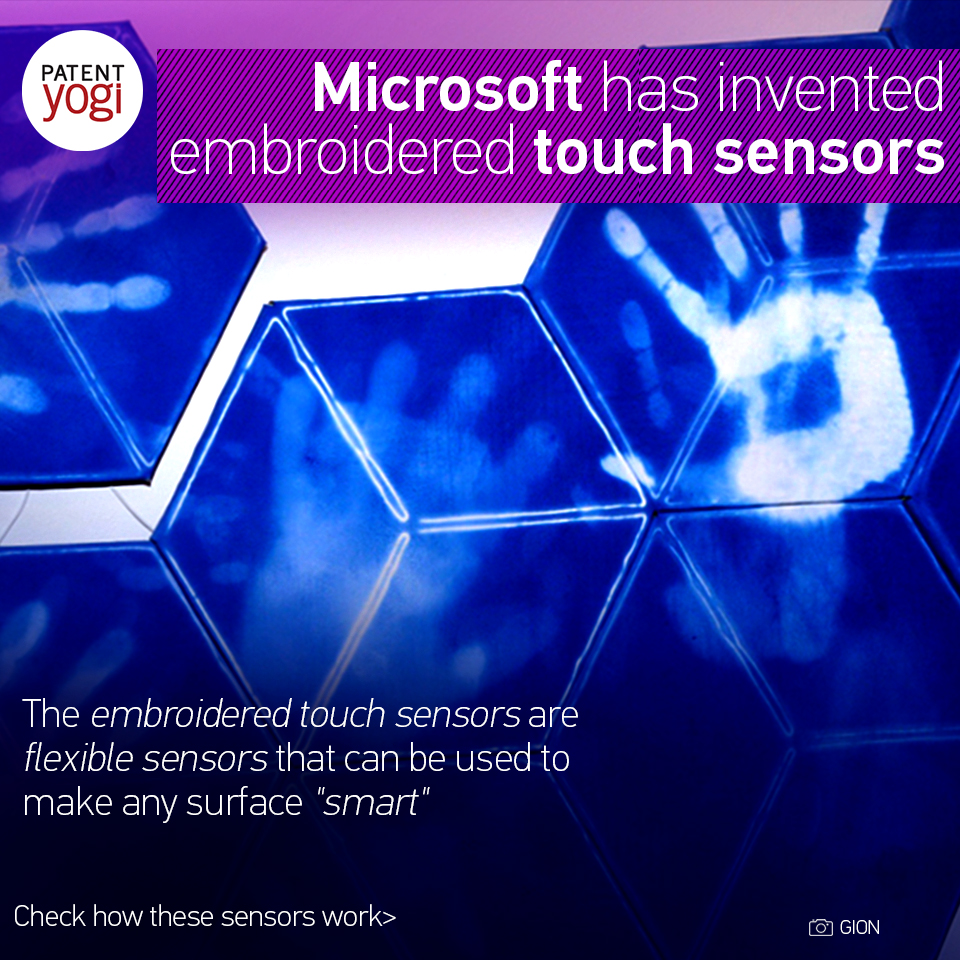Designers of devices are continually looking to improve the accuracy and efficiency of touch, gestural, and other input mechanisms supported by devices to make it easier for users to interact with device, and thereby increase the popularity and utility of the devices.
Traditionally, sensor systems utilize rigid components (such as printed circuit boards), which makes it difficult to shape the sensors and include sensors in flexible and irregularly shaped objects and surfaces. Thus, the rigidity of traditional sensor systems limits the ways in which the sensors may be employed and the kinds of devices that can make use of the sensor systems.
A recent patent publication from Microsoft reveals that the company has invented an embroidered sensor assembly, which is formed on a flexible substrate, such as a suitable fabric material. Google is also working on a similar technology to develop interactive textiles.

According to the patent publication, conductive patterns are sewn into the flexible substrate using embroidery techniques to form an array of sensors that can be configured in various ways and used in many different applications. The conductive patterns form nodes and electrodes that correspond to positions of individual sensing points.

Sensors can be arranged to measure mutual capacitance or self-capacitance. Alternatively, they can be arranged to implement pressure and force sensitive controls for an input device, such as a keyboard (as shown below).

Other types of sensing is also possible such as for detection of proximity, controls, switches, motion detection, tracking, game controllers, wearable garment embedded control, communication indicators.
The embroidered sensor assembly is flexible and therefore can be shaped to conform to various different kinds of objects and form “smart” surfaces for those objects. Further, an embroidered sensor assembly can be manipulated into a selected shape and embedded within a rigid structure to form a composite object that includes a touch sensitive surface. As shown below, the embroidered sensor assembly is included on a pipe. The embroidered sensor assembly can be configured to measure various characteristic related to material conveyed via the pipe such as direction, flow rates, and turbulence.

The technology could be used to make all surfaces “smart”.
Publication number: US 20160328043
Patent Title: Embroidered Touch Sensors
Publication date: 10 Nov 2016
Filing date: 10 May 2015
Inventors: Christian Juland Moller; James David Holbery; John Guido Atkins Weiss; Aric A. Fitz-Coy; Stephanie Jo Rodgers-Ahnen;
Original Assignee: Microsoft Technology Licensing, LLC

